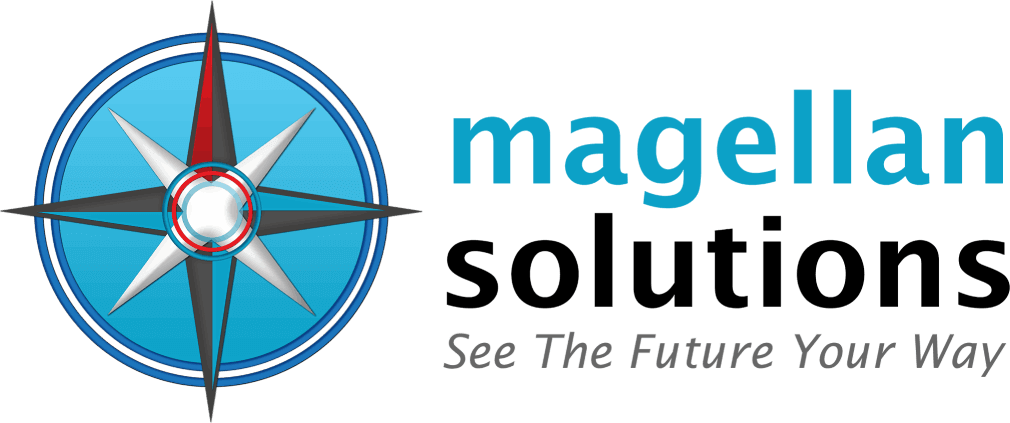The Outsource Navigator
The A-Z of Outsourcing will help you build your team in the Philippines. Outsourcing can feel like a deep-sea adventure, full of new lingo and curious phrases! But don’t worry; we’ve got your guide to help you sail through. This glossary is packed with the must-know BPO terms to keep you cruising smoothly, whether just dipping your toes in or diving deep. So grab your compass, jump aboard, and get ready to speak the language of outsourcing like a pro. Let’s make sense of the BPO world together—one wave at a time!
Warning: Undefined array key "content" in /home/magell11/public_html/wp-content/themes/betheme/functions/theme-shortcodes.php on line 11514
Warning: Undefined array key "content" in /home/magell11/public_html/wp-content/themes/betheme/functions/theme-shortcodes.php on line 11514
Warning: Undefined array key "content" in /home/magell11/public_html/wp-content/themes/betheme/functions/theme-shortcodes.php on line 11514
Warning: Undefined array key "content" in /home/magell11/public_html/wp-content/themes/betheme/functions/theme-shortcodes.php on line 11514
Warning: Undefined array key "content" in /home/magell11/public_html/wp-content/themes/betheme/functions/theme-shortcodes.php on line 11514
A system that automatically dials numbers from a database and connects answered calls to an agent or a recorded message. Common in outbound call centers
Artificial Intelligence (AI)Technology used to automate tasks like chat responses, call routing, and sentiment analysis in contact centers.
Average Handling Time (AHT)The time it takes to handle a customer interaction from start to finish.
Augmented RealityA technology that overlays digital information, like images or sounds, onto the real world through devices like smartphones or glasses.
BPO BenchmarkingThe process of comparing a company's outsourcing performance metrics against industry standards or competitors to evaluate efficiency and identify areas for improvement
Business Continuity Plan (BCP)A strategy ensuring operations can continue during and after disruptive events, such as natural disasters or cyberattacks.
Business To Business (B2B)It describes businesses that sell products or services to other companies, focusing on serving the needs of organizations, enterprises, and commercial clients.
Business To Customers (B2C)It refers to companies selling products or services directly to individual consumers, focusing on customer experience, and personalized marketing to meet personal needs and preferences.
Call DispositionThe final status or outcome of a call, often recorded in CRM systems (e.g., "resolved," "escalated," or "callback scheduled").
Cloud ComputingThe delivery of computing services (like storage, software, and processing power) over the internet, allowing access to data and applications from anywhere.
Cloud Contact CenterA call center hosted on a cloud infrastructure, allowing remote access and scalability without physical hardware.
Customer Satisfaction CSAT)A measure of how happy customers are with a product or service, often assessed through surveys, feedback, ratings, and customer reviews to evaluate service quality.
Customer Effort Score (CES)A measure of how much effort a customer has to put in to get a problem solved or a service completed, with the goal of making experiences easier for them.
Customer Experience (CX)The overall impression a customer has of their interactions with a business, including aspects such as service quality, support, user experience, product satisfaction, etc., throughout their entire customer journey.
Customer Relationship Management (CRM)A system for managing customer interactions, utilizing tools for sales tracking, customer retention, marketing automation, and personalized communication.
Data EncryptionThe process of converting sensitive information into a secure format to prevent unauthorized access, crucial for compliance and data security in call centers.
Dedicated Account ManagerA person assigned to manage a specific client's needs, providing personalized service, customized solutions, client support, and ensuring a strong client relationship.
De-escalationA process of reducing tension or conflict in a difficult situation by using calm communication, active listening, conflict resolution techniques, and empathy to prevent further escalation.
Employee Net Promoter Score (eNPS)A metric used to measure employee satisfaction and loyalty within the organization.
First Call Resolution (FCR)The percentage of customer issues resolved on the first call without the need for follow-up or escalation.
GamificationUsing game mechanics like points, badges, or leaderboards to motivate and improve agent performance.
Hybrid WorkforceA staffing model combining in-office agents and remote workers, providing flexibility and resilience.
Intelligent Document Processing (IDP)The use of AI and machine learning to extract, process, and analyze data from documents like invoices, forms, or emails for faster and more accurate workflows.
Interactive Agent Desktop (IAD)A unified interface for agents that consolidates all necessary tools, data, and applications for efficient customer service.
Interactive Voice Response (IVR)A phone system that allows customers to interact using voice commands or keypad inputs to access information or services.
IP Contact CenterA customer support system that uses internet-based technology to manage and route calls, chats, and other communications.
ISO CertificationA recognition that a company meets international standards for quality, safety, and efficiency in its products, services, or processes.
JavaA widely used programming language designed to create software that can run on different devices and operating systems.
Knowledge Process Outsourcing (KPO)The outsourcing of specialized and knowledge-based tasks, such as research, analysis, or technical expertise, to external providers.
Key Performance Indicators (KPIs)Metrics used to evaluate the performance of agents and call center operations (e.g., Average Handle Time, FCR).
Machine LearningA type of artificial intelligence where computers learn from data to improve performance without being explicitly programmed.
Net Promoter Score (NPS)A metric that measures customer loyalty by asking how likely they are to recommend a business to others.
OmnichannelA way for businesses to connect with customers across different channels, like phone, email, chat, and social media, while keeping the experience smooth and connected.
Predictive DialerAn automated phone system that dials multiple numbers at once and connects agents only to calls answered by a person, improving efficiency in outbound calling.
Platform as a Service (PaaS)A cloud-based service that provides a platform allowing developers to build, deploy, and manage applications without needing to manage the underlying infrastructure.
Quality MonitoringThe process of evaluating and ensuring the quality of customer interactions or services to maintain standards and improve performance.
Queue Management SystemA system used in contact centers to manage customer call volumes, ensuring that customers are handled in an organized and timely manner, improving both wait times and service delivery.
Robot Process Automation (RPA)The use of software robots or "bots" to automate repetitive tasks and processes, reducing the need for human intervention.
Seat LeasingA service where a company rents office space, equipment, and sometimes staff to operate its business, allowing it to avoid upfront costs and operational complexities.
Service Level Agreement (SLA)A contract that defines the expected level of service between a provider and a customer, including response times and performance standards.
Service LevelThe defined quality, performance, and response standards that a service provider agrees to deliver to customers.
Six SigmaA method used to improve business processes by finding and fixing mistakes, reducing errors, and making things work more efficiently to ensure high-quality results.
Shared Services and Outsourcing Network (SSON)A global community and resource hub that connects professionals and companies involved in shared services, outsourcing, and digital transformation to share insights, best practices, and industry trends.
Software as a Service (SaaS)A cloud-based software delivery model where users access applications through the internet, typically on a subscription basis, without needing to install or maintain the software.
Speech AnalyticsA technology that analyzes voice interactions using speech recognition and AI to gain insights on customer sentiment, agent performance, and process improvement in BPO operations.
Two-factor authentication (2FA)A security process that requires two forms of identification to access an account, typically a password and a second factor like a code sent to your phone.
Unified Communications (UC)A system that integrates different communication tools, like voice, video, messaging, and file sharing, into one platform for seamless collaboration.
Voice CommerceThe use of voice-activated devices or assistants to make purchases or complete transactions online.
Voice Over Internet Protocol (VoIP)A technology that allows voice communication to be transmitted over the internet instead of traditional phone lines.
A system that automatically dials numbers from a database and connects answered calls to an agent or a recorded message. Common in outbound call centers
Artificial Intelligence (AI)Technology used to automate tasks like chat responses, call routing, and sentiment analysis in contact centers.
Average Handling Time (AHT)The time it takes to handle a customer interaction from start to finish.
Augmented RealityA technology that overlays digital information, like images or sounds, onto the real world through devices like smartphones or glasses.
The process of comparing a company's outsourcing performance metrics against industry standards or competitors to evaluate efficiency and identify areas for improvement
Business Continuity Plan (BCP)A strategy ensuring operations can continue during and after disruptive events, such as natural disasters or cyberattacks.
Business To Business (B2B)It describes businesses that sell products or services to other companies, focusing on serving the needs of organizations, enterprises, and commercial clients.
Business To Customers (B2C)It refers to companies selling products or services directly to individual consumers, focusing on customer experience, and personalized marketing to meet personal needs and preferences.
The final status or outcome of a call, often recorded in CRM systems (e.g., "resolved," "escalated," or "callback scheduled").
Cloud ComputingThe delivery of computing services (like storage, software, and processing power) over the internet, allowing access to data and applications from anywhere.
Cloud Contact CenterA call center hosted on a cloud infrastructure, allowing remote access and scalability without physical hardware.
Customer Satisfaction CSAT)A measure of how happy customers are with a product or service, often assessed through surveys, feedback, ratings, and customer reviews to evaluate service quality.
Customer Effort Score (CES)A measure of how much effort a customer has to put in to get a problem solved or a service completed, with the goal of making experiences easier for them.
Customer Experience (CX)The overall impression a customer has of their interactions with a business, including aspects such as service quality, support, user experience, product satisfaction, etc., throughout their entire customer journey.
Customer Relationship Management (CRM)A system for managing customer interactions, utilizing tools for sales tracking, customer retention, marketing automation, and personalized communication.
The process of converting sensitive information into a secure format to prevent unauthorized access, crucial for compliance and data security in call centers.
Dedicated Account ManagerA person assigned to manage a specific client's needs, providing personalized service, customized solutions, client support, and ensuring a strong client relationship.
De-escalationA process of reducing tension or conflict in a difficult situation by using calm communication, active listening, conflict resolution techniques, and empathy to prevent further escalation.
A metric used to measure employee satisfaction and loyalty within the organization.
The percentage of customer issues resolved on the first call without the need for follow-up or escalation.
Using game mechanics like points, badges, or leaderboards to motivate and improve agent performance.
A staffing model combining in-office agents and remote workers, providing flexibility and resilience.
The use of AI and machine learning to extract, process, and analyze data from documents like invoices, forms, or emails for faster and more accurate workflows.
Interactive Agent Desktop (IAD)A unified interface for agents that consolidates all necessary tools, data, and applications for efficient customer service.
Interactive Voice Response (IVR)A phone system that allows customers to interact using voice commands or keypad inputs to access information or services.
IP Contact CenterA customer support system that uses internet-based technology to manage and route calls, chats, and other communications.
ISO CertificationA recognition that a company meets international standards for quality, safety, and efficiency in its products, services, or processes.
A widely used programming language designed to create software that can run on different devices and operating systems.
The outsourcing of specialized and knowledge-based tasks, such as research, analysis, or technical expertise, to external providers.
Key Performance Indicators (KPIs)Metrics used to evaluate the performance of agents and call center operations (e.g., Average Handle Time, FCR).
A type of artificial intelligence where computers learn from data to improve performance without being explicitly programmed.
A metric that measures customer loyalty by asking how likely they are to recommend a business to others.
A way for businesses to connect with customers across different channels, like phone, email, chat, and social media, while keeping the experience smooth and connected.
An automated phone system that dials multiple numbers at once and connects agents only to calls answered by a person, improving efficiency in outbound calling.
Platform as a Service (PaaS)A cloud-based service that provides a platform allowing developers to build, deploy, and manage applications without needing to manage the underlying infrastructure.
The process of evaluating and ensuring the quality of customer interactions or services to maintain standards and improve performance.
Queue Management SystemA system used in contact centers to manage customer call volumes, ensuring that customers are handled in an organized and timely manner, improving both wait times and service delivery.
The use of software robots or "bots" to automate repetitive tasks and processes, reducing the need for human intervention.
A service where a company rents office space, equipment, and sometimes staff to operate its business, allowing it to avoid upfront costs and operational complexities.
Service Level Agreement (SLA)A contract that defines the expected level of service between a provider and a customer, including response times and performance standards.
Service LevelThe defined quality, performance, and response standards that a service provider agrees to deliver to customers.
Six SigmaA method used to improve business processes by finding and fixing mistakes, reducing errors, and making things work more efficiently to ensure high-quality results.
Shared Services and Outsourcing Network (SSON)A global community and resource hub that connects professionals and companies involved in shared services, outsourcing, and digital transformation to share insights, best practices, and industry trends.
Software as a Service (SaaS)A cloud-based software delivery model where users access applications through the internet, typically on a subscription basis, without needing to install or maintain the software.
Speech AnalyticsA technology that analyzes voice interactions using speech recognition and AI to gain insights on customer sentiment, agent performance, and process improvement in BPO operations.
A security process that requires two forms of identification to access an account, typically a password and a second factor like a code sent to your phone.
A system that integrates different communication tools, like voice, video, messaging, and file sharing, into one platform for seamless collaboration.
The use of voice-activated devices or assistants to make purchases or complete transactions online.
Voice Over Internet Protocol (VoIP)A technology that allows voice communication to be transmitted over the internet instead of traditional phone lines.




